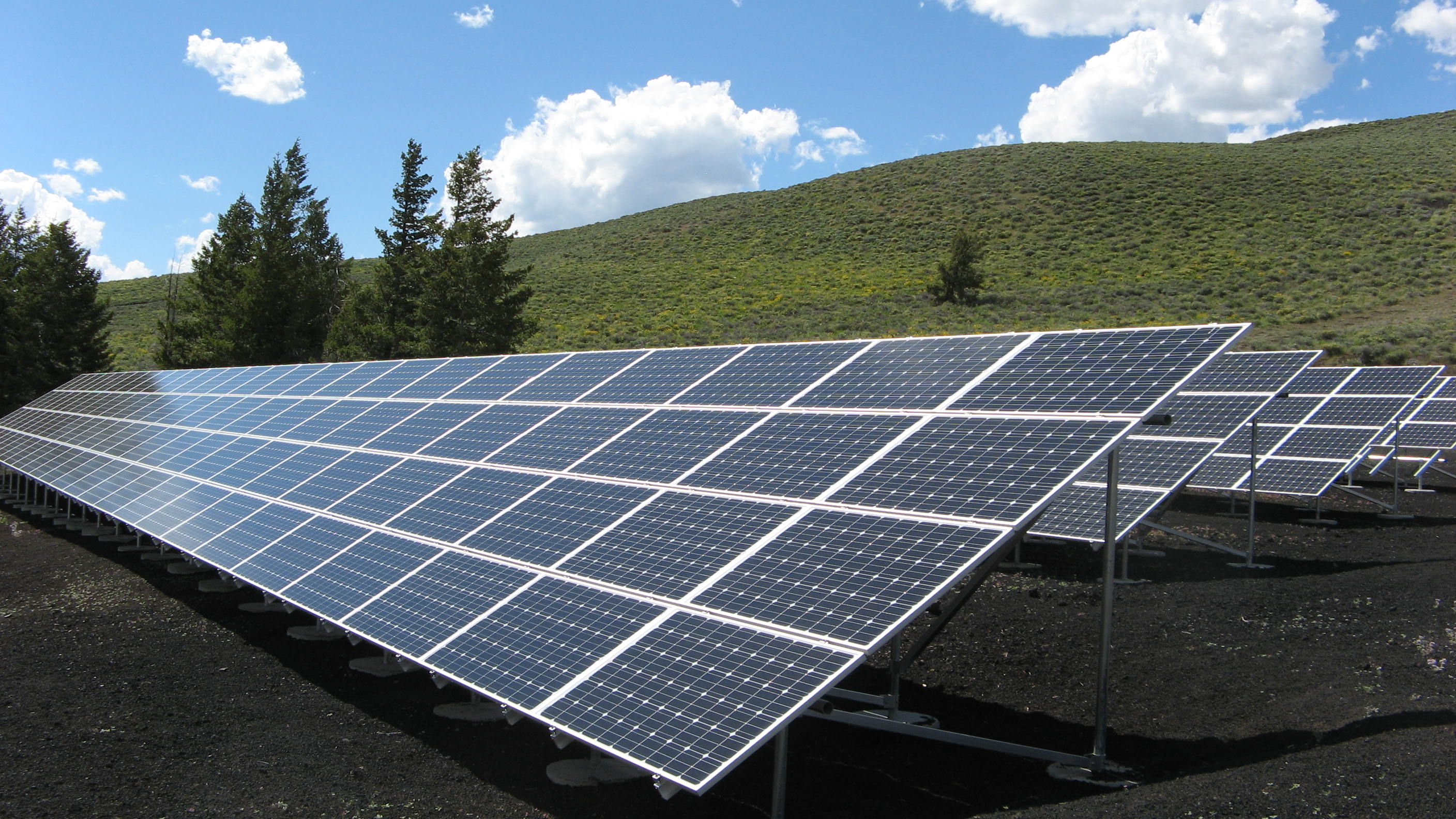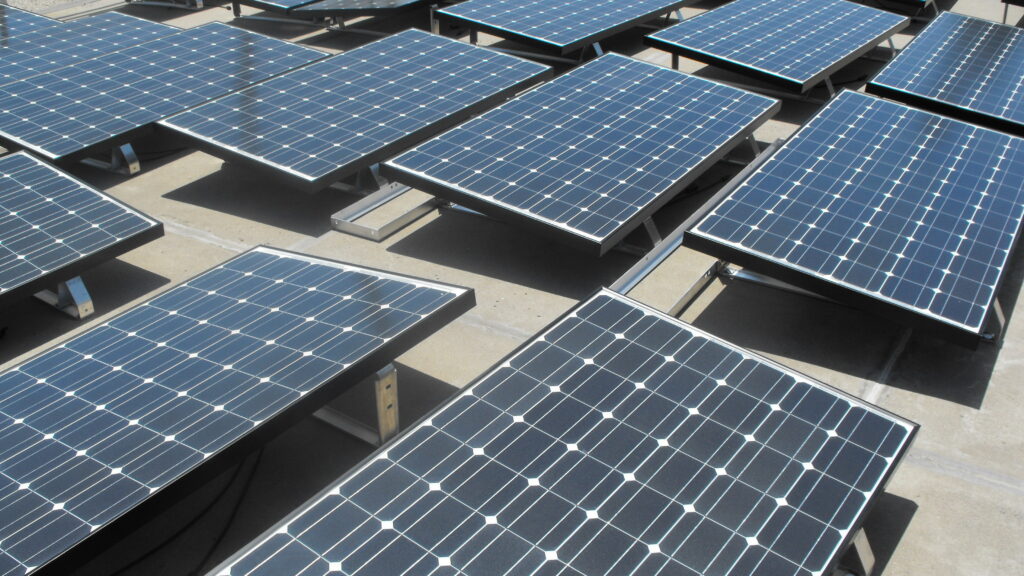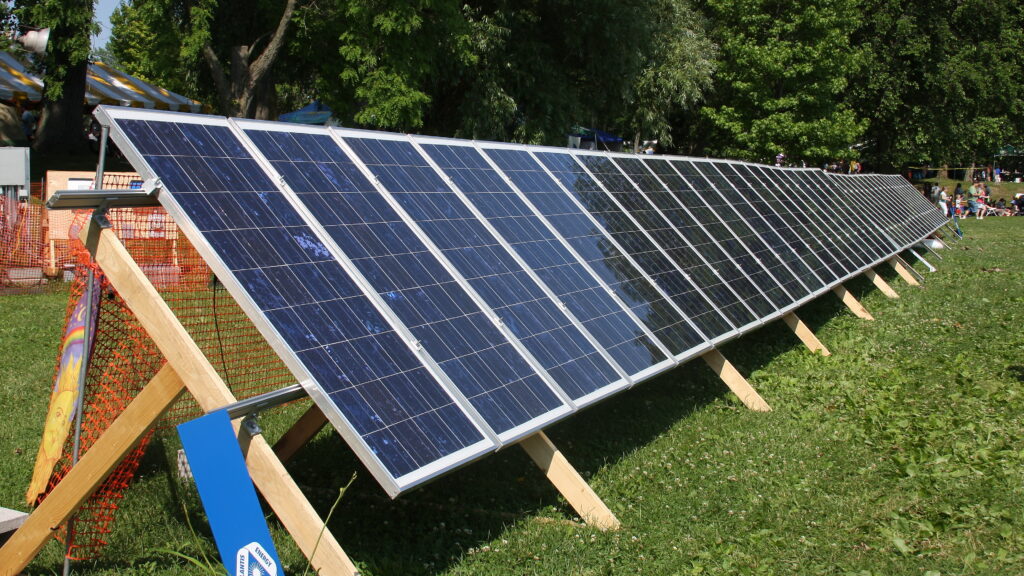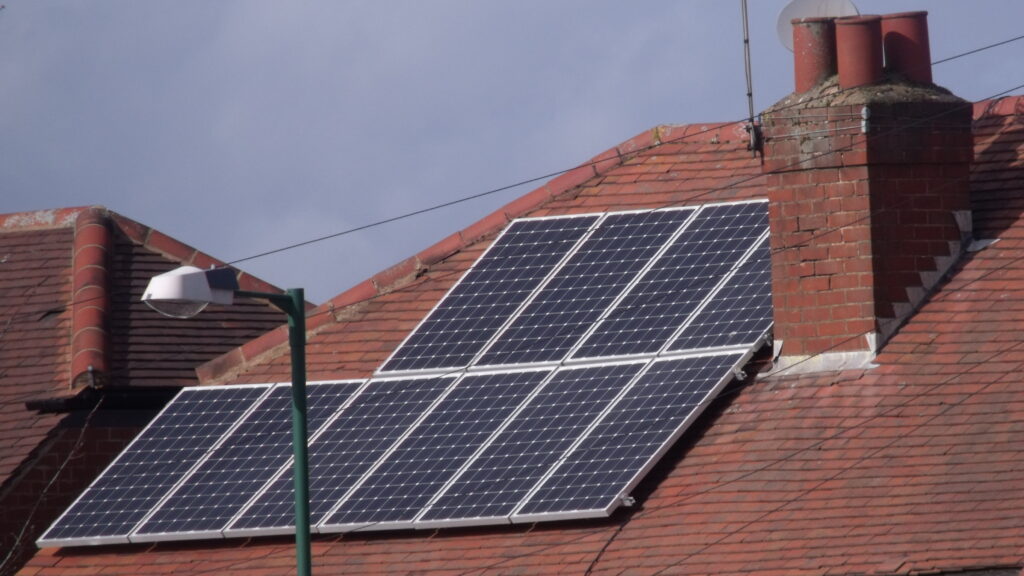
Are you wondering if the benefits of a home solar installation will outweigh the costs for you?
There’s no doubt that solar energy is gaining in popularity among homeowners wanting to join the green energy revolution. Today, interested consumers have many solar companies competing for their business.
Consequently, the cost of a solar panel installation is more affordable than ever. In fact, the installation cost for solar fell by more than 70% over the last decade.
It’s true that the price of solar panels has fallen considerably over the past decade while electricity rates are predicted to continue to rise steadily. So, it seems like home photovoltaic (PV) panels can definitely offset your monthly electric bill.
Also read: Tesla Solar Roof: Everything you need to know
However, solar panel price is only one factor that affects the total cost of a solar installation.
Here you’ll find everything you need to know from start to finish if you’re considering a solar array — whether rooftop or ground mount — for your home.
There’s a multi-step process to finding the best solar installation package that’s customized to meet your energy needs at the lowest price. Here you’ll find seven steps to follow if you want to prevent costly mistakes down the line.
You’ll also discover in this article the latest information on several money matters that will affect the final price of your solar installation, including:
- Homeowner tax incentives
- Current trade policy positions
- Financing options
Finally, you’ll read about four major aspects of purchasing a solar system installation that you may not have considered before. Since they touch on key points, you definitely want them to fall within your solar cost radar during the buying process.
Knowing that the initial cost for a small (5 kW) rooftop or ground mount solar installation averages $15,000-25,000 (before any tax or other incentives are applied), it’s worth your time to find out everything you need to know about the cost of a solar panel installation before signing a contract.

Table of Contents
What steps are involved in purchasing a home solar panel installation?
There are seven steps in the process of purchasing a solar panel installation for your home. Here they are ordered in a logical progression from beginning to end.
-
Evaluate your property for sun exposure.
No matter how perfect a solar install is, without abundant sunlight you just won’t be able to produce sufficient solar power to offset your initial investment in less than 10 years.
But there’s a lot more to it than sunshine.
For maximum solar power production, the sun’s rays must hit perpendicularly on your ideally south-facing PV panels.
Depending on your latitude, the angle of the PV panels that guarantees a perpendicular strike varies throughout the day and over the course of a year. A solar tracking system will best capture the rays all the time, but that may double your project cost while boosting energy production by only 35%.
If your fixed-mount array is angled at 30-45 degrees on your roof, you’ll probably achieve good energy output averaged out over the course of a year.
It’s also important to determine if there are trees or tall buildings that could create shade on your panels. Shadows would compromise energy production.
If you decide that your roof isn’t the best place for a solar setup and you have a sunny spot elsewhere on your property, consider a ground mount system instead.
-
Assess the condition of your roof or yard.
If your roof is aged or damaged, it is best to replace or repair it before you get solar installed. Although it’s possible to remove the panels temporarily to do roof work after installation, there will be an extra charge.
A multi-tiered roof may not be adequate to house your entire array. Unless you’d settle for a small system that will fit, a ground mount system may be a better option for you.
For a ground mount solar system, be sure you’re not on sandy or water-logged soil. Unless you know that your neighbors won’t plant trees or build near the property line during the 25-30-year lifespan of your PV panels, select a sunny spot closer to the center of your yard.
-
Analyze your home electricity usage.
The easy way to do this is to average the energy consumed (measured in kilowatt hours, kWh) that’s shown on your monthly electric bills. Or you could do it the long way, appliance by appliance.
Alternatively, use an online calculator to calculate home energy consumption.
After estimating how much electricity you need based on your annual usage, you then decide whether you want all of it or just a certain percentage coming from the photovoltaic (PV) panels. By using that value, you can determine the size of the solar system that’s right for you.

-
Size the solar system to meet your energy needs.
According to the U.S. Energy Information Administration, the average American household energy consumption is about 900 kWh per month. That works out to be approximately 11,000 kWh annually.
Your home’s usage will vary depending on where you live, the size of your home, how many people are living with you, and other factors.
With the value you calculated for your home usage in Step #3, you can estimate the size of a solar array that will produce enough solar power to fulfill your energy demand. Your estimation should take into account the efficiency and power output ratings of the PV panels you intend to use.
There are several ways to figure out the optimal size of a solar installation for your situation. One of the most trusted methods is by using the free online tool PVWatts, developed by the National Renewable Energy Laboratory (NREL).
Another is to rely on the number-crunching abilities of the certified solar installation companies you’re thinking of using.
To give you an idea of what you’re looking at when it comes to the size of a solar install, a 5-kW solar array will generate on average and under good conditions around 20 kWh every day (600 kWh/month).
-
Gather project bids from three or more reputable solar installers.
To get the best price, search out at least three quotes from local certified installers. Ask friends and neighbors who have already gone solar for recommendations. They may even get compensated for referring you if you later sign up with their company!
Certified professional solar installation companies may be able to offer you a great financing option at the time of quote with loan agencies they work with. Doing your own research may uncover an even better financing option.
-
Research and figure into your final solar cost all government tax breaks, vendor rebates, company discounts, etc.
Take time to thoroughly research the federal, state, and local tax incentives that apply. Start your search with the federal program called the solar Investment Tax Credit (ITC).
The Database of State Incentives for Renewables & Efficiency (DSIRE) lists statewide incentives across the country.
Utility and solar companies may also offer rebates or discounts for solar panel installations. You won’t know until you ask.
-
Consider all your financing options and select the one that offers the best deal.
Companies which have given you quotes will often come prepared with several financing options at the time of quote. They may have agreements with loan companies offering better terms than those you’d get on your own.
However, doing your own investigation may uncover a superior financing option. A home equity loan may be a possibility. Leasing the solar system rather than buying is another alternative. Community solar is yet another way to go, especially for urban dwellers.

What factors are important to consider before purchasing a home solar panel installation?
If you’re considering a solar panel installation for your home, there are several aspects to think about before making the financial investment. Here are the most important.
-
Judge whether your home or property is a good candidate for solar, or how you can make it more solar energy friendly.
If you live in a state with plentiful sunshine, especially at high elevation, you have two big advantages over people living in low-elevation states experiencing lots of clouds.
Your home’s orientation and your roof’s pitch are also important when figuring out if you’re a good candidate for rooftop solar.
But even if your roof is lacking in these respects, especially if it’s 10 years old or older, you could still get a solar install in your yard if you have space and lots of sun.
To give you a better idea of how well solar will work for you, calculating your sun number may help.
-
Consider how much your electricity rate is in your area and whether (if available) the net metering program offered by your utility will give you a fast payback.
When electricity rates are very high in your area, it may be to your economic advantage to use solar energy for your home. This is true especially if your region receives plenty of sun and if your PV panels are oriented for maximum sun exposure. In this case, choosing the largest system your roof or yard can support will be worth it.
Check out the U.S. Energy Information Administration (EIA) for the latest average electric rates in your state.
In cases where your roof and/or property isn’t optimal or your electric rates are low, a small solar array may still be worthwhile.
Moreover, if your utility company will pay you full retail amount for any excess electricity you produce and send back to the electric grid (through net metering), you’ll have even more reason to invest in a solar installation.
The net metering rules and regulations change frequently for economic and political reasons. They are different from state to state. Be sure to search out several knowledgeable local experts who can provide their insight on this subject in your area. Try especially to get their forecast on future net metering trends in your state.
-
Predict whether PV panel installation costs will fall in the near future or if more tariffs on photovoltaic modules will raise your bottom line even more.
Based on falling prices for materials and increased demand for home solar, the Solar Energy Industries Association (SEIA) predicts that installation costs will continue to drop in the near future.
This trend is likely to continue at least until the end of 2023 when the federal tax credit program is set to expire. Through programs like SolarAPP and SolSmart, economic barriers to residential solar installations are overcome.
Trade issues with China, the world’s largest solar producer, continue, but whether they will directly impact the cost of home solar installation is unknown. At this point, it seems like there won’t be any significant impact in the near future. But as the situation is volatile, consumers planning on a solar installation soon should keep their eye on it.
For now, the Biden administration has agreed to continue the tariff on bifacial panels (which are not yet used in home solar too much) imposed by the Trump administration in 2018. Some major players in the U.S. solar industry are not happy with the Biden decision and have petitioned him to revoke Trump’s tariffs.
More recently, the Biden administration has restricted access of four large Chinese solar companies to the U.S. market. This move signals Biden’s intent to grow the domestic solar industry.
-
Balance whether it’s better to take advantage of the federal tax credit program for solar installation this year (2021) before it further drops from 26% to 22% next year.
The federal Investment Tax Credit (ITC) stands at 26% (down from its initial 30%) for a home solar installation until the end of 2022. Then it will drop to 22% until the end of 2023. In 2024 and after, the ITC will be 10%, pending further Congressional action to renew it.
How much does a solar panel installation cost?
The cost of a solar panel installation varies across the United States. A general estimate for a small (5 kW) rooftop system in 2021 is $15,000-$25,000 (before tax credits or other discounts).
A ground mount solar array of the same size (before incentives have been figured in) may cost closer to $25,000. Other solar experts claim you may be able to get it for as low as $14,000.
In terms of solar power produced by a home system, the latest Solar Market Insight Report (2021) gives the average cost for a home solar installation at about $2.94/watt. For an average American home, this works out to $15,000 (before tax and other incentives).
The solar installation price includes:
- PV modules
- Solar inverter
- Hardware and wiring
- Labor
- Fees for permits, inspections, and interconnections
The final solar price depends on several factors including:
- Where you live
- Solar panel efficiency
- System size
- Sun exposure
- Net metering eligibility
- Battery storage capability

How much value does a solar installation add to your home?
Research shows that a rooftop solar array adds $15,000 to the value of your home. When viewed from this perspective, choosing a solar installation for your home is a no-brainer.
Just keep in mind as a general rule of thumb: A large solar system of highly efficient solar panels is more expensive, but a smaller solar array with less efficient panels may still provide significant cost savings over the long term all other things being equal (especially location and sun exposure).
What is the payback period for a home solar installation?
In terms of how long it will take you to recover all of your initial costs from your solar installation, it may take approximately 10 years. Given that system life runs 25-30 years producing electricity for you with only small drops in module efficiency each year, that’s not too bad — and getting shorter all the time.
The energy payback of your home solar system is a measure of how long it must generate electricity in order to compensate for all the fossil fuel energy that went into producing it in the first place. This value takes into account:
- The energy used to extract, transport, and refine minerals used in PV modules
- The energy needed to manufacture and transport them
- The pollution and greenhouse gases emitted during these processes
Research shows that it will take from 1-4 years depending on the type of modules you have for a total energy payback. This length of time is expected to decrease over time with technological innovations in the PV industry.
Key points on solar installation cost
Most homeowners can significantly reduce home electric bills by investing in a solar panel installation. To make the long-term investment work out maximally to your advantage, it’s a good idea to follow the seven-step process described in this article.
To determine if and how much you can save on home energy costs through a solar array at your home or on your property, consider the four additional aspects as discussed in this article before you sign on the dotted line.
Also read: The 6 best cheap hybrid cars you can buy in the US today
Using the 7-step process along with these four points as a guide, you’ll have everything you need to know about the cost of a residential solar panel installation. This information will simplify your decision-making process so that you’ll make the best choice about a solar panel installation for your home.
Then you’ll really start reaping the benefits of solar energy for the next 25-30 years that will save you money while you help save the planet.